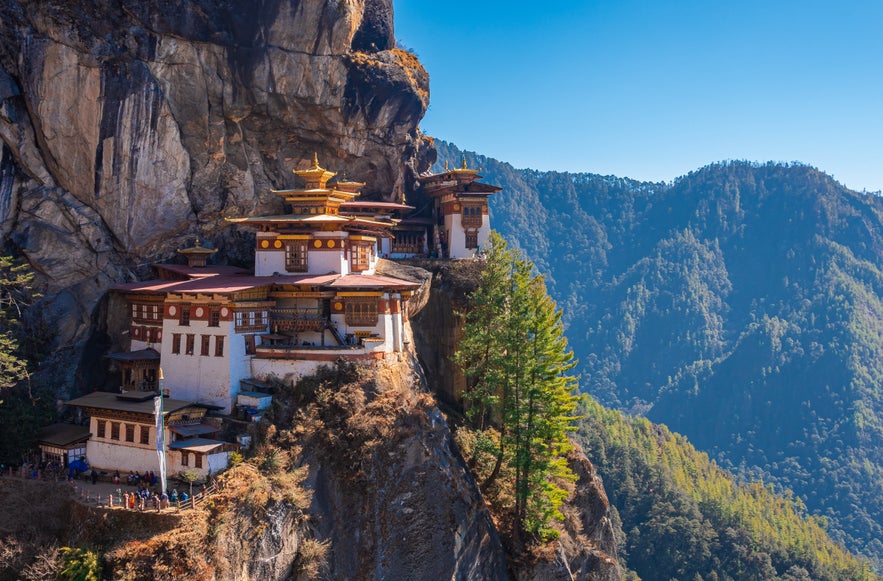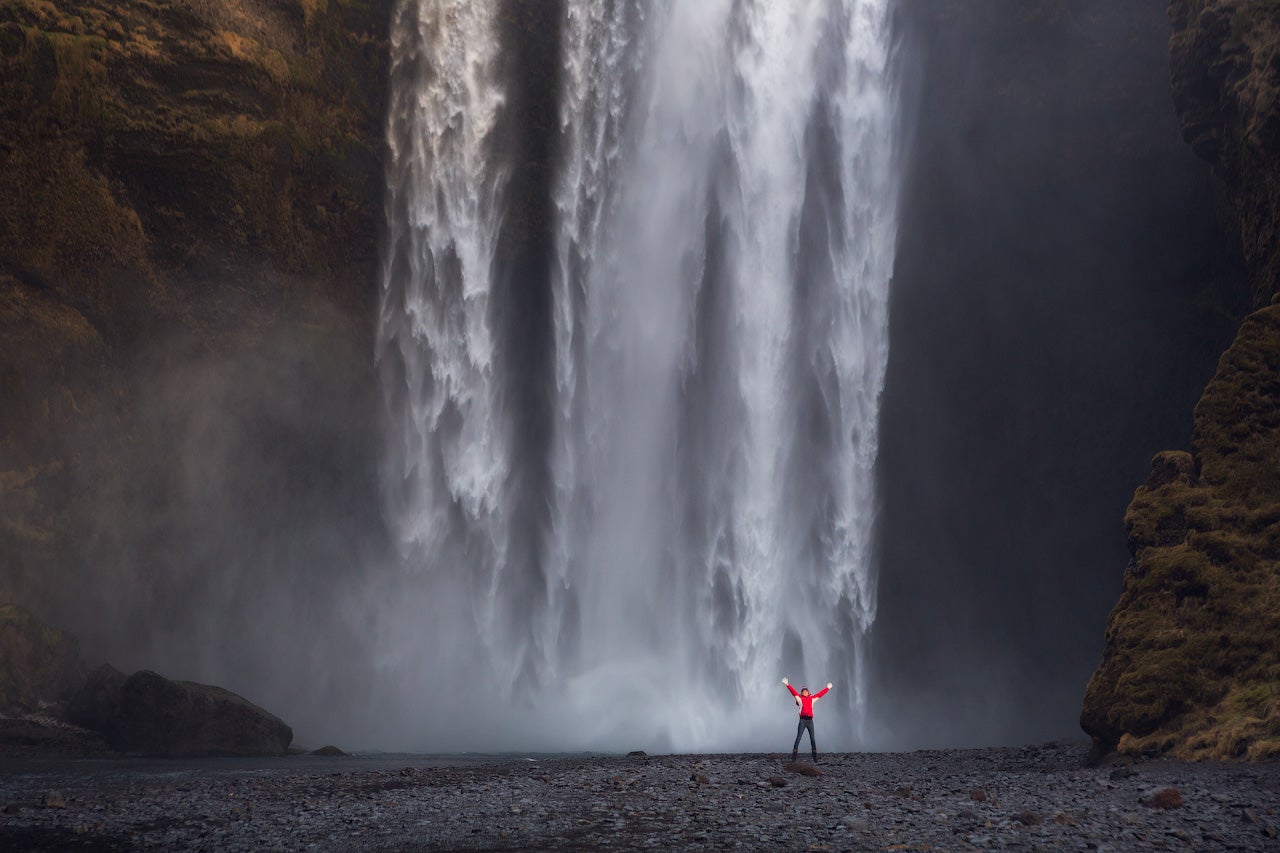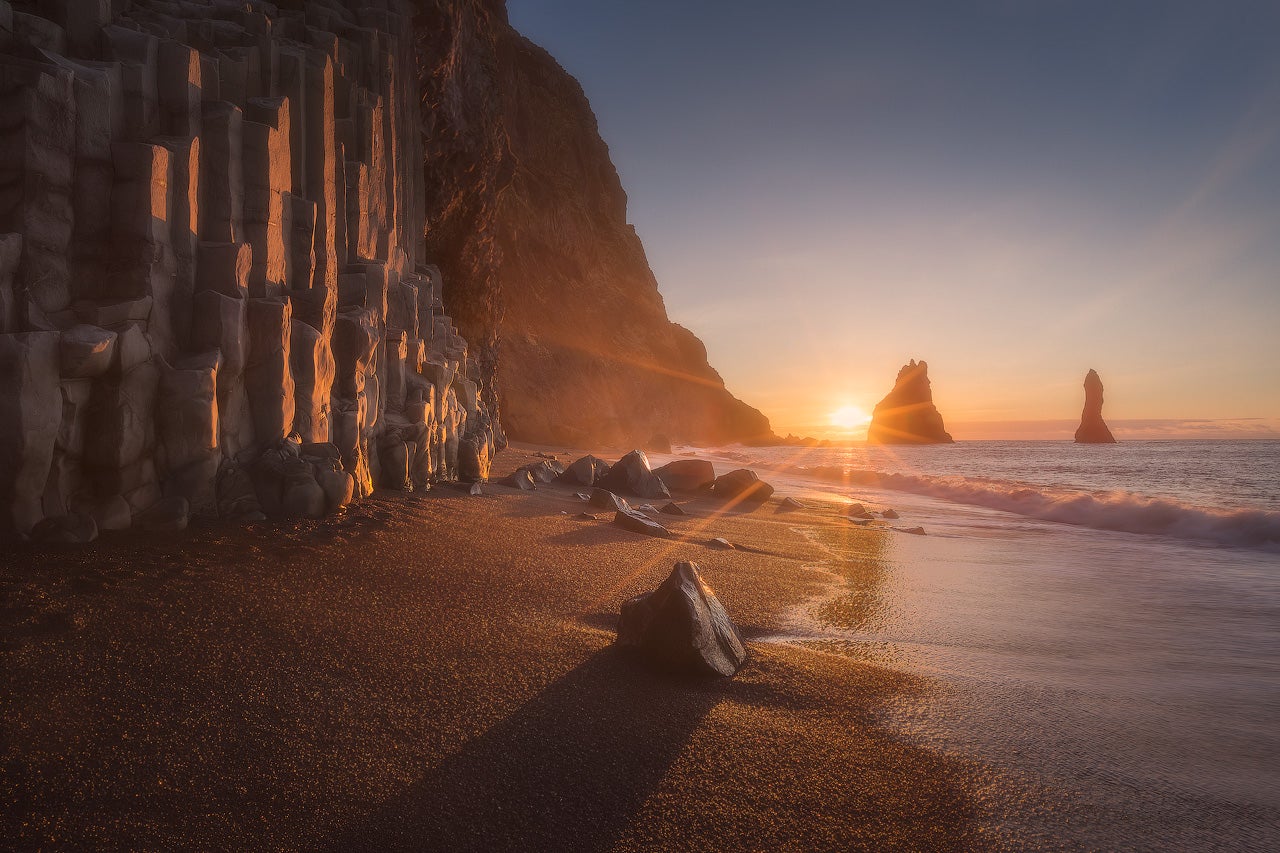
Aperture is one of the most important styling tools in photography, so it is important to learn and understand how this camera setting can change your photographs to create a desired effect. Aperture is also one of the three components of what is known as the ‘Exposure Triangle’, where aperture, shutter speed and ISO work together to create an exposure of the photograph.
- Explore these Photography Techniques
- Discover What is Aperture? An Introduction to Aperture in Photography
- Learn all about Aperture and F-Stop in Landscape Photography for Beginners
In the simplest of terms, exposure for photographers refers to how an image is recorded by the camera sensor and how much light is captured. If you know how to control or adjust these elements, then taking a well exposed photograph will not be a problem for you. In this article, we will focus on understanding the differences between using a wide and narrow aperture, as well as how that choice will alter your photographs.
What is Aperture?
The literal meaning of aperture in optics is ‘a hole through which light travels’. In photography, this term relates to the opening of a lens.
When you press your shutter to take a photo, the shutter mechanism opens to let the light in. Light then hits the sensor before the shutter mechanism closes again. The aperture that you set impacts the size of that hole. The larger the opening, the more light that will get in. Similarly, the smaller the opening, the less light that will be let in. It functions in the same way our eyes do. If we look at a bright scene, the iris in our eyes shrinks, however, if we enter a dark environment, it expands to let in as much light as possible.
 You can see the aperture in the middle of this lens. Photo by: 'ShareGrid, Unsplash'.
You can see the aperture in the middle of this lens. Photo by: 'ShareGrid, Unsplash'.
Aperture in photography is also measured through using what is commonly known as an ‘f-stop’. This will appear on your camera as, for example, f/2 or f2, depending on which camera brand you use.
This number helps you to understand what kind of aperture you have set on your camera or lens. Each lens differs in terms of the aperture it has available. For example, some lenses are able to open up to f/1.2 while others might only open up to f/4. Most modern cameras will allow you to adjust the aperture by changing settings on the camera body, however, some lenses also have a physical aperture ring around their barrel.
Understanding when you will benefit from using a wide or narrow aperture will help you achieve a result that is in line with your creative vision. Let’s look at the differences between using a wide and narrow aperture and what each one of them entails.
 A simple infographic that displays aperture range for easy understanding. Photo by: 'Anete Lusina'.
A simple infographic that displays aperture range for easy understanding. Photo by: 'Anete Lusina'.
- See also: How to Get Creative with a Fisheye Lens
What is a Wide Aperture?
It might appear confusing and it still causes bewilderment amongst photographers at times, that using wide (or large) aperture actually means using a small number, such as f/2.
The confusion appears because we naturally assume that a ‘large aperture’ will be equal to a larger number.
An easier way to think about this is to think in fractions. A fraction of 1/2 is larger than 1/16. The same applies to aperture in photography, where f/2 will create a wider or larger aperture than f/16. So, when considering a wide aperture, we are referring to apertures that open as wide as f/1.2 – f/2.8. Photographers might also refer to choosing a wider aperture as ‘opening up’ the lens.
Light
When browsing for a lens, photographers generally pay attention to the maximum aperture the lens can open up to as it gives an indication of the faster shutter speeds available for the lens to be able to perform in low light scenarios. This is because a wide aperture has a larger opening hole, thus it lets more light in.
Having a lens with a wide aperture will give you more flexibility but it comes at a cost. While prime lenses have a set maximum aperture, some zoom lenses have a variable maximum aperture. This means that the maximum aperture will vary depending on the zoom range you are using.
- See also: Beginner's Guide to Camera Settings
Depth of Field
As we've already noted, aperture is a crucial styling tool in photography. The aperture allows you to control the depth of field in your images. This gives you more room to be creative because it determines the area that appears sharp in your photos.
When you are using a wide aperture, such as f/2, you are creating a shallow depth of field, meaning, a shallow plane of your image is in focus. What this translates to in photographs is blurry backgrounds.
 Wide aperture creates a blurry background. Photo by: 'Karl Chor, Unsplash'.
Wide aperture creates a blurry background. Photo by: 'Karl Chor, Unsplash'.
In what scenarios would we benefit from choosing a wide aperture? People, food, and product photographers will appreciate being able to use a lens that can open up wide. Being able to create a blurry background is beneficial when you want to isolate your subject, whether it is a person, a coffee cup or perhaps a single flower in a vase.
Portrait photographers work in different styles, with some using only natural light and others adding an artificial light. If the portrait photographer works primarily with natural light, then they will favour a ‘fast’ lens with wide open apertures such as f/1.4. This is because wider apertures will make it easier to shoot in lower light scenarios. Choosing a wide aperture for portraits allows the photographer to focus the lens on the subject's eyes and let the background blur out. This can create striking portraits where the viewer's eyes are immediately led towards the subject's face.
 Focusing on the subject's eyes with a wide aperture, the foreground (hands) and the background become blurry which creates a striking portrait with the focus of the model's eyes. Photo by: 'Candice Picard, Unsplash'.
Focusing on the subject's eyes with a wide aperture, the foreground (hands) and the background become blurry which creates a striking portrait with the focus of the model's eyes. Photo by: 'Candice Picard, Unsplash'.
Portrait photographers, as well as other social photographers, such as family, new-born or boudoir, often use a wide aperture to focus on the subject's details to create visual interest. This might be a strand of hair, a detail of an outfit for boudoir photographers, a couple's ring for wedding photographers, new-born baby’s hand for child photographers and so on.
Using a wide aperture and focusing on small details while letting the background become blurry combined with a variety of compositions and angles creates interesting and visually pleasing shots. You can also add details, such as a light piece of fabric, fairy lights or other items that can add interesting light or texture to the foreground of your shot. Using a wide aperture will blur it out while adding another level of interest to the frame.
 Using a wide aperture creates a central focus of the image, which is intricate details of the bride's rings. Photo by: 'Chuttersnap, Unsplash'.
Using a wide aperture creates a central focus of the image, which is intricate details of the bride's rings. Photo by: 'Chuttersnap, Unsplash'.
Similarly, food and product photographers will not only style their shots by arranging their scene but also by choosing a wide aperture to focus on a particular part of it. This can create an effective marketing shot where the main focus is on one product or a part of it, whilst the background becomes blurry.
 Wide aperture helps food photographers style their shot by choosing what is in focus and what isn’t. Photo by: 'Claudia Crespo, Unsplash'.
Wide aperture helps food photographers style their shot by choosing what is in focus and what isn’t. Photo by: 'Claudia Crespo, Unsplash'.
The ability to isolate a subject by using a wide aperture not only helps to make the subject stand out but it can also help to blur out unwelcome backgrounds. Some photographers might find it beneficial to use a wide aperture when they are faced with a distracting or unpleasant background. This way, they are not only isolating the subject to make it stand out but also taking the attention away from the background, which may otherwise detract from the image.
However, this may not always work in bright light conditions, such as in harsh sunlight where you might be required to lower your aperture in order to not overexpose your shot.
What is a Narrow Aperture?
When we refer to ‘a narrow aperture’, we mean choosing a larger number f-stop – such as, f/8 or f/16 – which creates a narrow (or small) opening to let the light through. As the opening is small, the camera needs to make up for the loss of light by slowing the shutter speed to achieve a well-exposed image. Photographers also use the term ‘stopping down’ when referring to selecting a narrow aperture, which is the opposite of ‘opening up’ when referring to choosing a wider aperture.
Light
Available light is one of the first things we evaluate when setting up a shot. A narrow aperture, such as f/16, lets in a lot less light compared to f/2.8, therefore we need to take that into consideration. So, in what situations might you find it handy to use a narrow aperture?
As a landscape photographer, you might want to create a soft motion-blur or long exposure effect in the sky or in running water. To do that, you will need to slow down your shutter speed which in return will require limiting the amount of light that reaches the sensor, otherwise you will overexpose your shot. Seeing as a narrow aperture allows you to do that, you can ‘stop down’ to a narrow aperture, such as, f/11 or f/16.
 Narrow aperture combined with slow shutter speed captures both sharp details of objects that are not moving and also creates a soft blurred effect in the sky and water. Photo by: 'Fabian Irsara, Unsplash'.
Narrow aperture combined with slow shutter speed captures both sharp details of objects that are not moving and also creates a soft blurred effect in the sky and water. Photo by: 'Fabian Irsara, Unsplash'.
Similarly, architecture or street photographers can use a narrow aperture to create a similar effect in the city by shooting a building with softly blurred sky in the background. Narrow apertures may also be used to capture light trails on the road during evening or night time.
Using a narrow aperture in conjunction with a slower shutter speed can also make for creative portraits or other experimental shots, such as capturing the movement of people. Another creative way of using narrow aperture in landscape or architecture photography is through creating starburst effects to add an interesting detail to your scenic imagery.
 Using a narrow aperture will blur backgrounds. Photo by: 'Miles Storey, Unsplash'.
Using a narrow aperture will blur backgrounds. Photo by: 'Miles Storey, Unsplash'.
Depth of Field
Using a narrow aperture produces shots with an increased depth of field, which will allow you to have more of the scene in focus. This is crucial for landscape and architecture photographers to achieve an image with both the foreground and background as sharp as possible.
 Using a narrow aperture means that you'll be able to get an entire building sharp and in focus. Photo by: 'Tobias Keller, Unsplash'.
Using a narrow aperture means that you'll be able to get an entire building sharp and in focus. Photo by: 'Tobias Keller, Unsplash'.
Look at any landscape shot and you will notice that the majority of photographers prefer using narrow apertures to showcase the scene they are capturing. The same applies to architecture photography, where capturing sharp details of the building and the surrounding environment is important.
 If your goal is to showcase the whole scene in your landscape shots, you will want to use a narrow aperture to have all necessary parts of your image in focus. Photo by: 'Rolf Gelpke, Unsplash'.
If your goal is to showcase the whole scene in your landscape shots, you will want to use a narrow aperture to have all necessary parts of your image in focus. Photo by: 'Rolf Gelpke, Unsplash'.
While you may want to get as much in focus as possible in your landscape shots, be mindful about your composition and focus. Choosing an interesting or appealing subject in the foreground, such as flowers, rocks, cracks in the ground, is generally a good starting point for deciding on where to place your focus and to set an appropriate narrow aperture.
For social photographers, using a narrow aperture will allow you to capture groups of people without losing focus on their faces. By ‘stopping down’, you will be able to increase the depth of field so that more of the image is in focus, which is useful for photographing groups of people who may not stand in the same plane of focus – for example, when people are standing behind one another. This is also beneficial for capturing larger scenes, such as events or gatherings, where the goal is to capture as much of the scene in focus as possible.
 If you want the whole group in focus, you will have to ‘stop down’ to an appropriate narrow aperture that captures everyone in focus. Photo by: 'Tiago Rosado, Unsplash'.
If you want the whole group in focus, you will have to ‘stop down’ to an appropriate narrow aperture that captures everyone in focus. Photo by: 'Tiago Rosado, Unsplash'.
Some food or product photographers will also favour narrow apertures if they are required to capture a larger scene, such as a flat-lay of various products or dishes photographed from above. In this scenario, a narrow aperture is used to ensure that all of the necessary details or products or sharp. This is often done in conjunction with using artificial lights.
Conclusion
To summarise, it is important to understand that wide aperture pertains to a large opening but when measured in f-stops, it is displayed with a small number, such as, f/2. Equally, narrow aperture means a small opening, which is measured in f-stops with a large number, such as f/32.
Wide aperture is useful for low-light scenarios and to create a shallow depth of field, which produces beautiful blurry backgrounds. You can adjust the strength of the blur by adjusting your aperture. On the other hand, narrow aperture is widely used by landscape and architecture photographers to capture detail and sharpness in the whole scene. It can also be harnessed creatively for longer exposure shots to add movement to your images.
The more you shoot and practice, the easier it will become to choose an appropriate aperture for your chosen scene. It might appear complicated at first but the moment you start putting this information in practice, it will soon become second nature to you.
About the author: Anete Lusina is a street and art photographer based in the United Kingdom. You can find more of her work on her website or by following her on Facebook and Instagram.
Are you obsessed with shooting at wide apertures? How about always using a narrow aperture to get everything sharp and in-focus? After reading this article, will you consider experimenting a bit more with the aperture setting on your camera? Share your thoughts by leaving a comment below!











